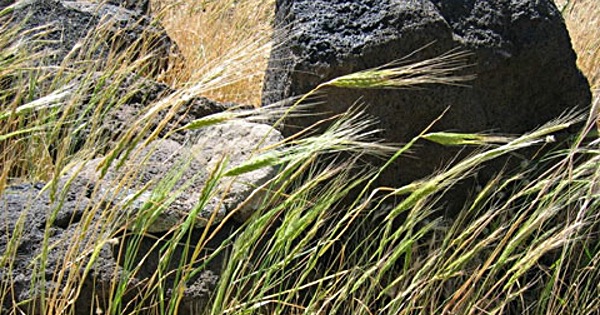
Podcast: Play in new window | Download (Duration: 6:00 — 4.9MB)
Subscribe: Google Podcasts | Spotify | Android | RSS | More
In the 1960s, using the most primitive of tools, an American plant scientist demonstrated that a small family, working not all that hard for about three weeks, could gather enough wild cereal seeds to last them easily for a year or more. Jack Harlan’s experiments on the slopes of the Karacadağ mountains in Turkey offer a perfect gateway to this exploration of the history of bread and wheat.
Photo of Wild einkorn, wild emmer and Aegilops species in Karacadag mountain range by H. Özkan.
Place reflections on toast in your ear.
Kicking off my contribution to Dogs Days of Podcasting 2018. Stay tuned.
eatthispodcast.com/our-daily-brea…
Listened The Abundance of Nature | Our Daily Bread 01 by Jeremy Cherfas from Eat This Podcast
Syndicated copies to:
Excellent presentation. Harlan’s powerful paper [Harlan JR. 1967 A wild wheat harvest in Turkey. Archaeology 20, 197–201] was a key reference in our recent attempt to provide a generic explanation for the origins of cereal agriculture [DOI: 10.1098/rspb.2018.0277]. Our paper reviewed the ecology of the immediate wild relatives of einkorn, emmer and barley and found – as Harlan had demonstrated – that they grow in `massive’ monodominant stands (as do the relatives of oats, rye and Asian rice).
We suggested that this ancestral monodominance validated present-day cereal monocultures.
A common adaptive feature of these Asian cereal relatives is their long awns – clearly seen in the photo. These awns have tiny ratchet teeth capable of burying the unusually large seeds in the ground: perhaps an explanation as to why modern cereal farming needs so much tilling and deep seeding to replace the previous shattering and seed burying found in nature.
Listened The Abundance of Nature Our Daily Bread 01 by Jeremy Cherfas from Eat This Podcast In the 1960s, using the most primitive of tools, an American plant scientist demonstrated that a small family, working not all that hard for about three weeks, could gather enough wild cereal seeds to last them easily for a year or more.
Fascinating stuff, looking froward to the series. Like this:Like Loading…
I hope you’re following Jeremy’s series on bread this month! Good stuff. @EatPodcast #ourdailybread
Over at Eat This Podcast, Jeremy has just kicked off a month of daily podcasting about wheat and bread. You have only a couple to catch up on, which is easy to do as each episode is only about 5 minutes long. We’ve had Jack Harlan harvesting wild wheat in the Kara Dag and Neanderthals eating porridge so far. I think we’ve got the polyploidy story today. Hang on to your genomes, it’s going to be quite a ride.
Kicking off my contribution to Dogs Days of Podcasting 2018. Stay tuned.
eatthispodcast.com/our-daily-brea…
A monthlong series of mini podcasts by Jeremy Cherfas on the history of bread, starting today. eatthispodcast.com/our-daily-brea…
Fascinating podacast on history of #bread #wheat
eatthispodcast.com/our-daily-brea…
Kicking off my contribution to Dogs Days of Podcasting 2018. Stay tuned.
eatthispodcast.com/our-daily-brea…
Kicking off my contribution to Dogs Days of Podcasting 2018. Stay tuned.
eatthispodcast.com/our-daily-brea…